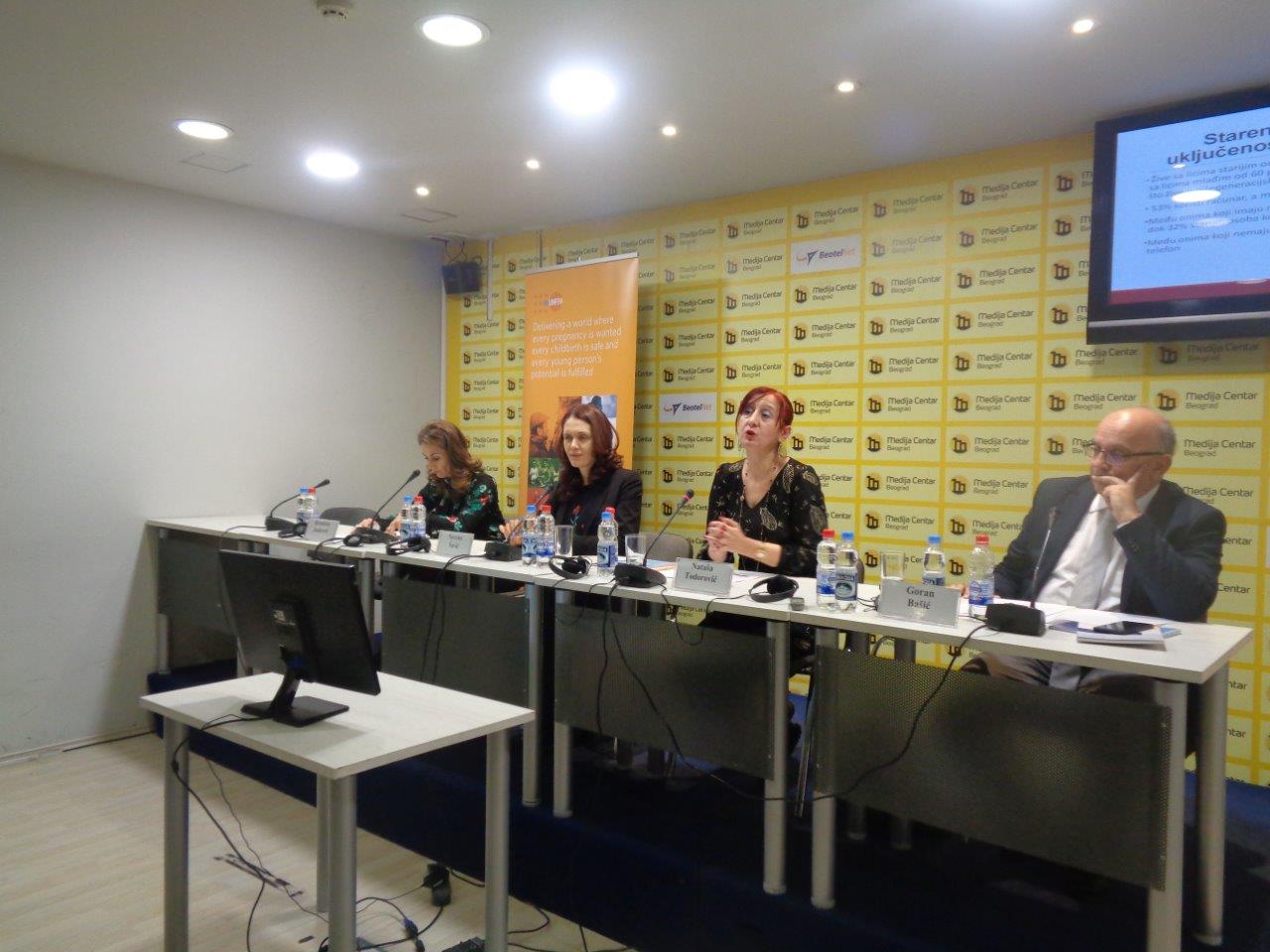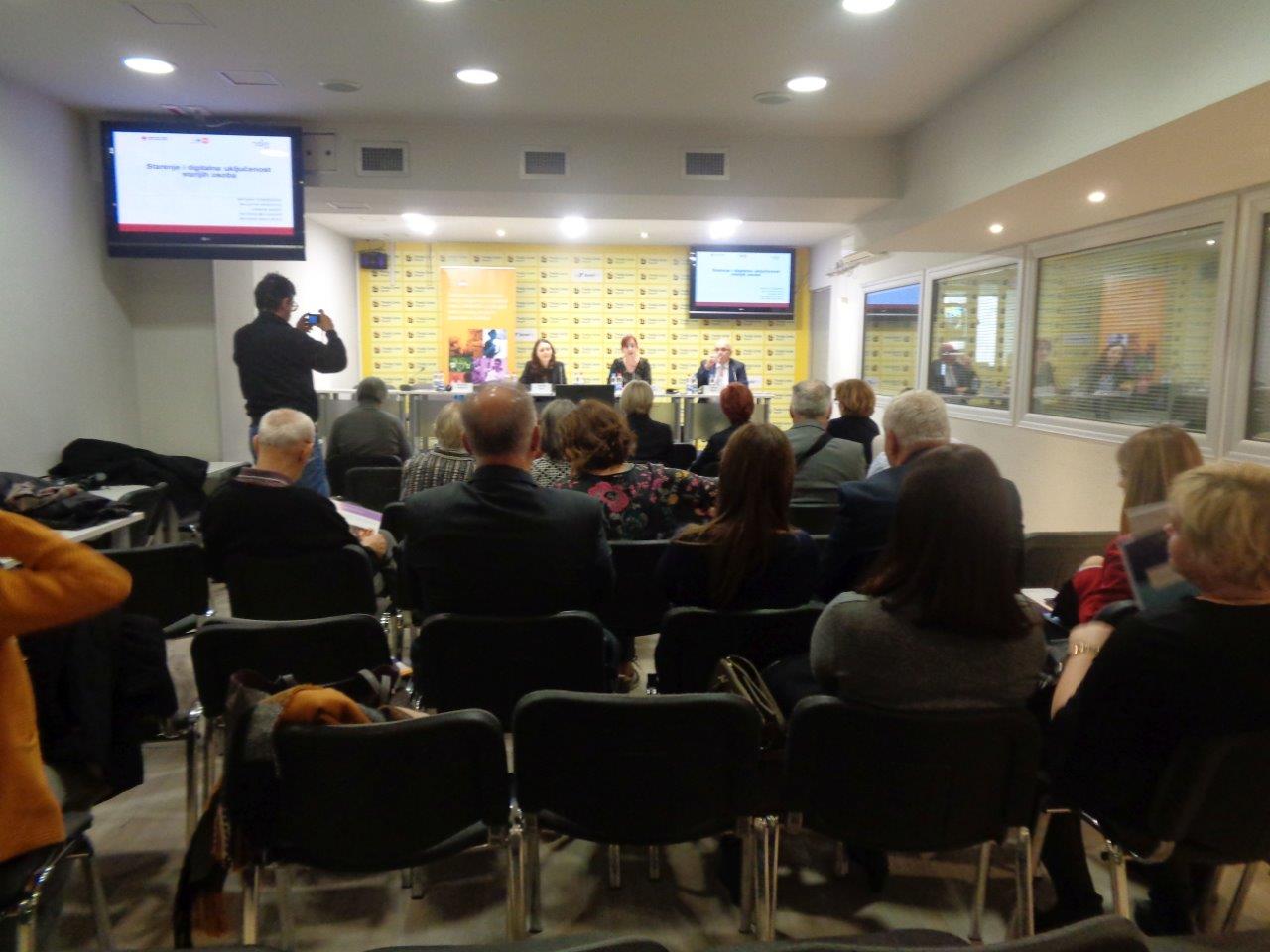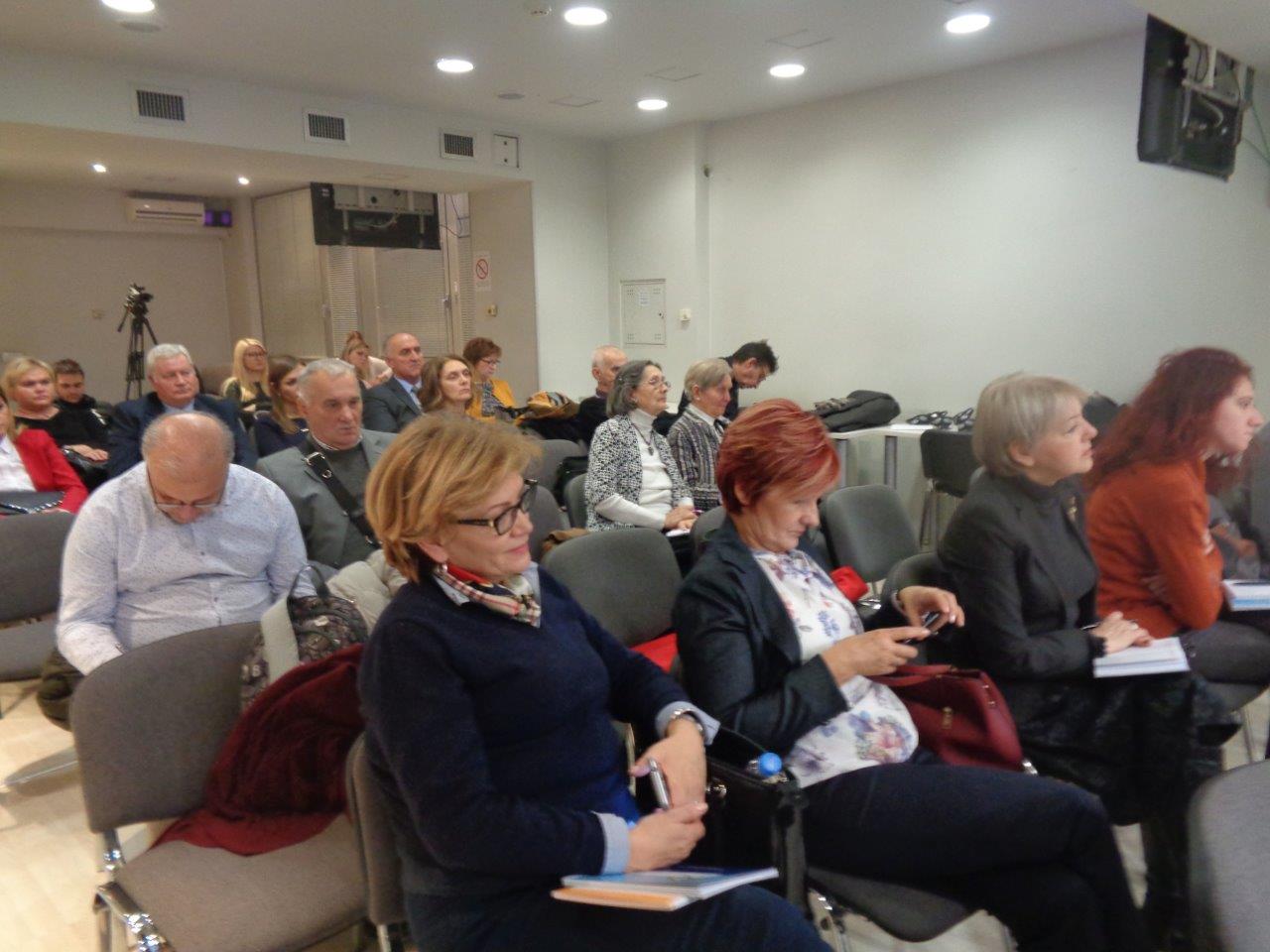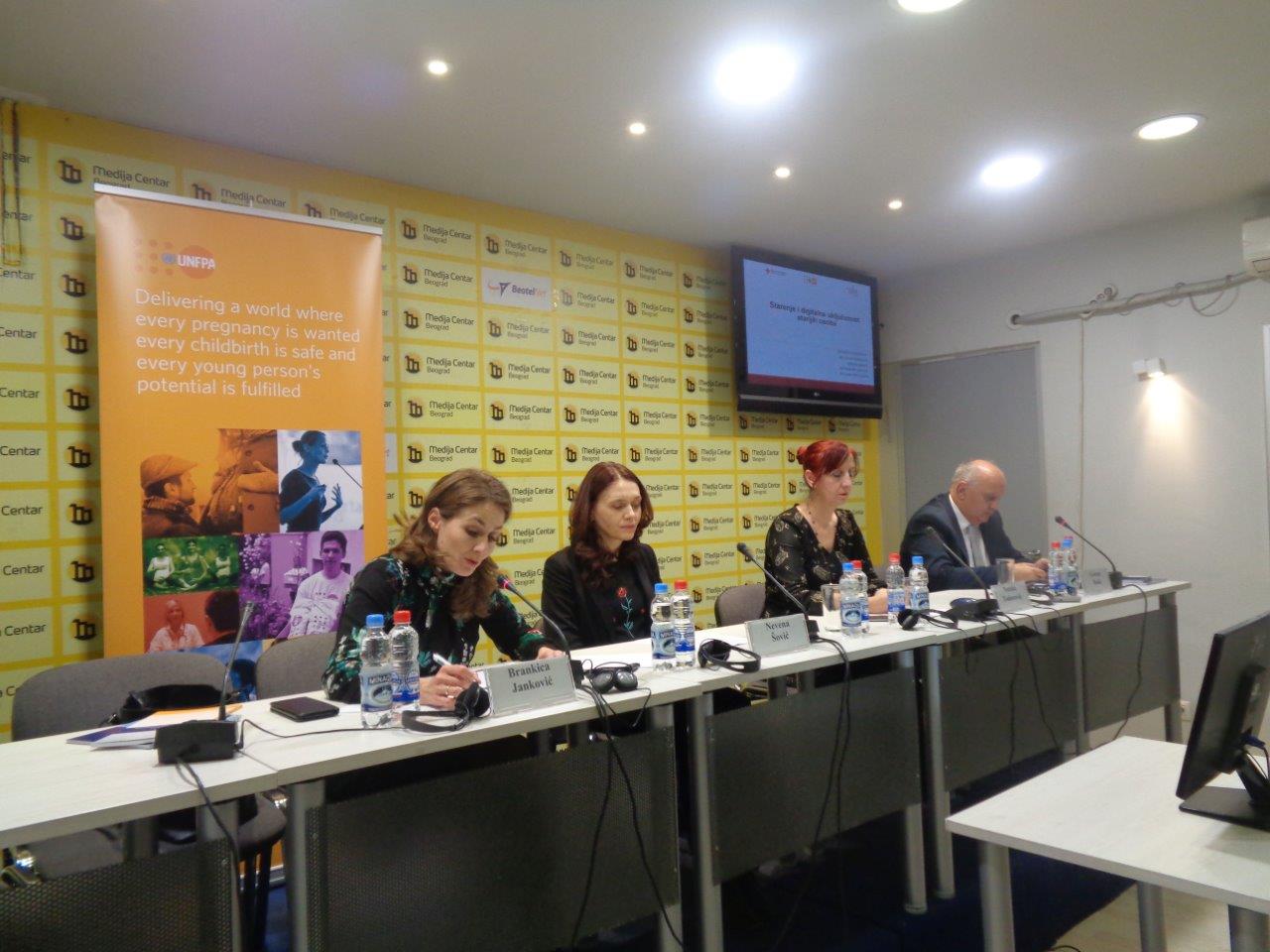Presentation of research results „Ageing and Digital Inclusion“
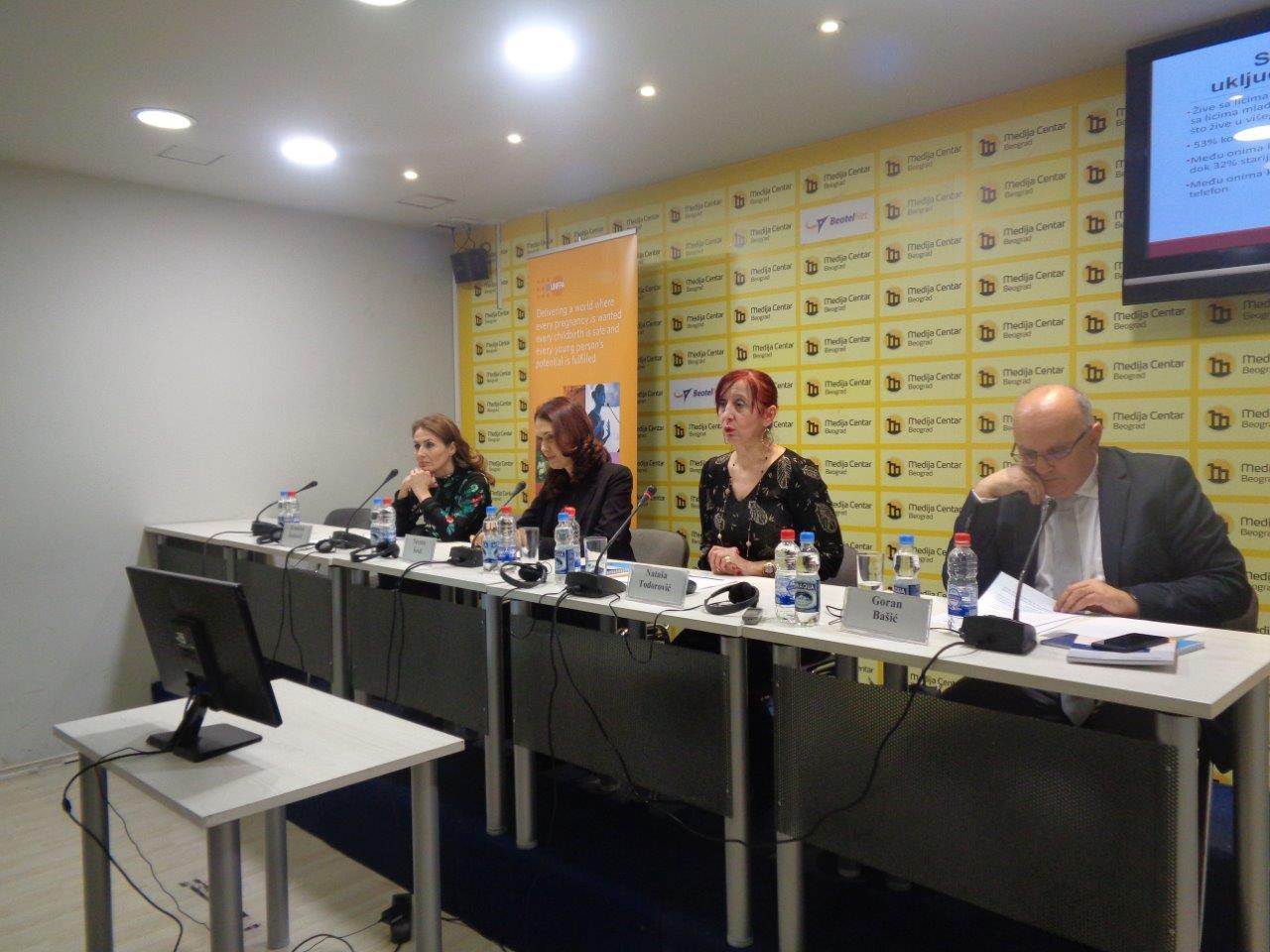
The Red Cross of Serbia and the Institute of Social Sciences on 11 December in the Belgrade Media Centre presented the results of a research study “Ageing and Digital Inclusion” implemented in 2019 within the framework of the project “Access of Older People to Information and Communication Technologies” with the support provided by the United Nations Population Fund (UNFPA). The speakers at the press conference included Natasa Todorovic, Red Cross of Serbia expert, Goran Basic, Head of the Institute of Social Sciences, Brankica Jankovic, Commissioner for Protection of Equality and Nevena Sovic, representing UNFPA, and along with the results of the research a Guide for e-services for older persons developed in the project was presented.
The research study included ten older persons from 29 Serbian municipalities each, with a view to estimate the degree of digital inclusion of older persons in Serbia – specifically their awareness of the existence of different online services and the frequency of use. Additionally, four focus group interviews with 42 participants were organised in the qualitative part of the research. 303 participants over 65 were involved in the research, 51 of them male and 49 female.
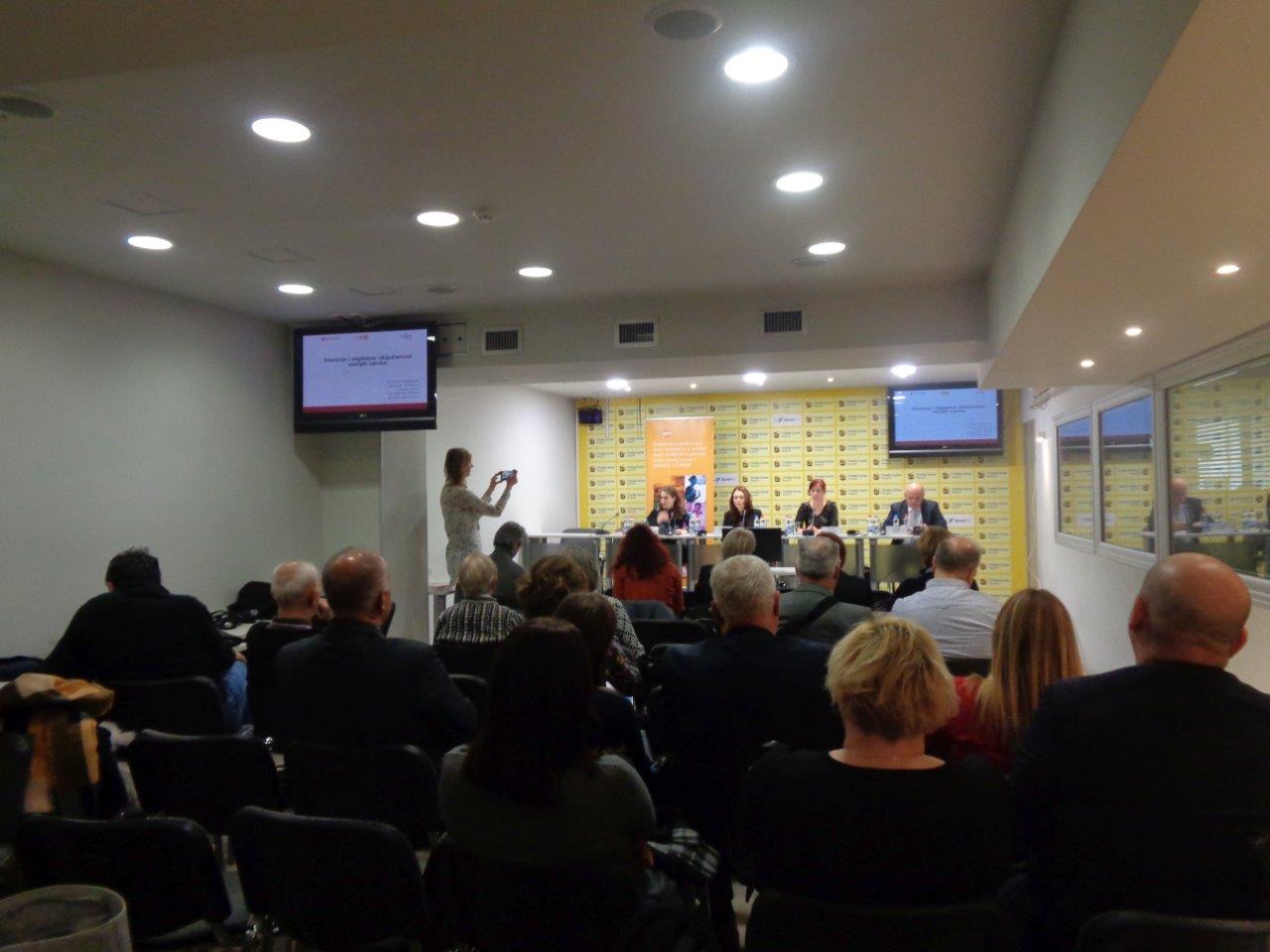
At the conference it was pointed out that 43% of older persons do not use internet and that 90% of those who do use it do not use e-government and e-banking services. The online services most frequently used by older persons are Viber (45%) and Skype (27%) which indicates that most older persons use the Internet to communicate with their families. The reasons for a very low frequency of use of e-government and e-banking services include mistrust in own knowledge and capacity to adopt new skills, as well as insufficient awareness of what these services actually have to offer. The most frequent reason, however, is that older persons prefer paying their bills in person as this allows them to maintain a degree of social contact.
The research also highlighted serious gaps in digital inclusion between older persons with higher and lower levels of education (78% of older persons with higher education own a computer and 74% own a smartphone whereas 79% of older persons with only primary school level of education do not own a computer and 86% do not own a smartphone) and older persons living in urban and rural areas (63% of urban older persons have a computer and 57% a smartphone, while only 11% of rural older persons have a computer and only 9% a smartphone).
Considering these differences and the fast pace of development of digital technology, with too little attention being paid to accessibility to older persons who may have problems with eyesight, disability or something else, the speakers at the conference emphasised that it is important to invest in lifelong learning and inclusive design of technologies to make them accessible to different population groups, but that it is also necessary to provide alternative access to services for those older persons who for different reasons can not or will not access them online, as to reduce the risk of their exclusion.
Research results:
Guide for e-services:
